Photographs of
|
|
|
|||||||||
|
|
|||||||||
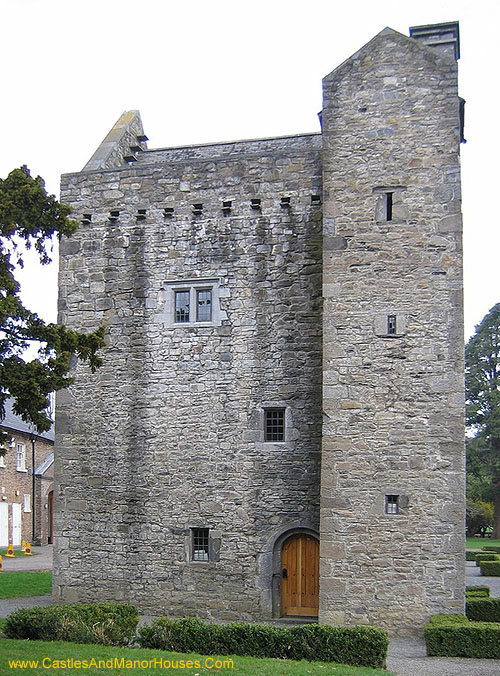 |
Ashtown Castle Phoenix Park, Dublin, County Dublin, Ireland
Ashtown Castle (Irish Caisleán Bhaile an Ásaighis) a fortified house thought to date from the 1430s.
The house / castle was later incorporated into the construction of Ashtown Lodge which was to serve as the official residence of the Under Secretary from 1782 and later as the residence of the Papal Nuncio.
In 1978 Ashtown Lodge was condemned due to dry rot. As the Lodge was being demolished, Ashtown castle was discovered within. It has now been restored and forms part of the Phoenix Park Visitor Centre.
|
||||||||
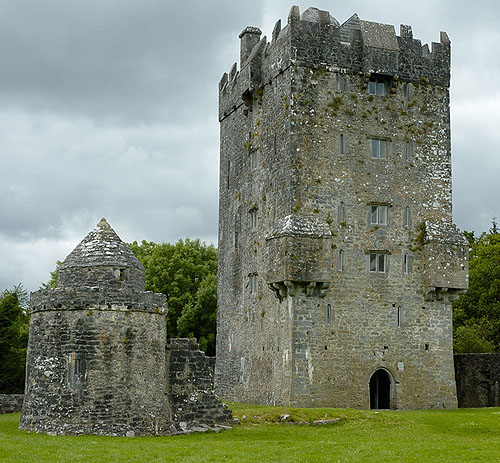 |
Aughnanure Castle, County Galway, Ireland
Aughnanure is one of over 200 tower houses in County Galway, constructed mainly by Gaelic and Anglo-Norman land owning families. The tower lies close to the shores of Lough Corrib
|
||||||||
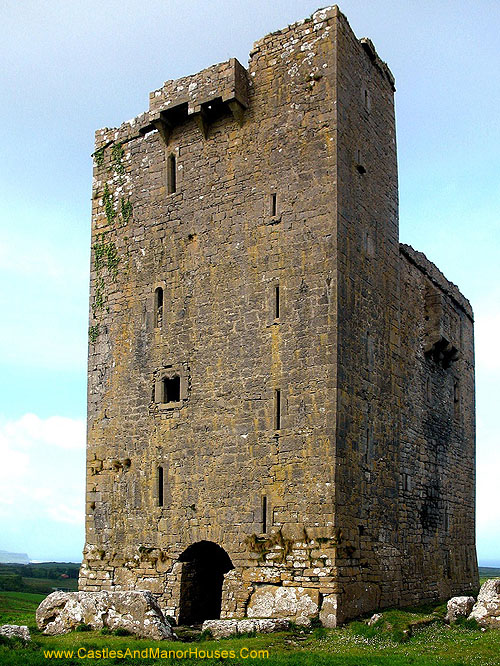 |
Ballinalacken Castle Doolin, County Clare, Ireland
Ballinalacken Castle is a two-stage tower house, most likely built in the 15th or early 16th century. The name is taken from the townland where it is located, the original Irish version of which is Baile na Leacan, which means the town (land) of the flagstones.
It is located on a limestone outcrop overlooking the road from Lisdoonvarna to Fanore.
The basements of Ballinalacken Castle are thought to have been built as far back as the 10th century, by the O'Connor's, who then ruled West Corcomroe. |
||||||||
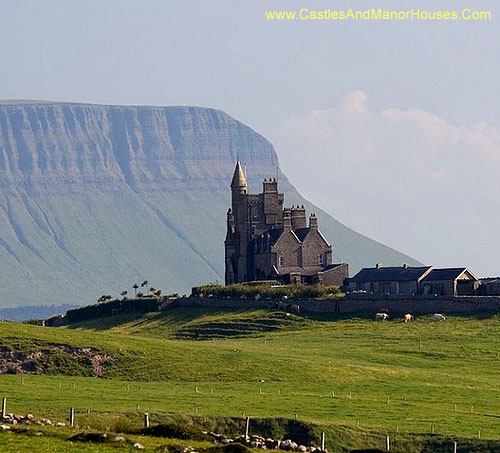 |
Classiebawn Castle Mullaghmore peninsula near Cliffoney, County Sligo, Republic of Ireland.
Classiebawn Castle is a country house built for Viscount Palmerston on what was formerly a 10,000 acre estate. The current castle was largely built in the nineteenth century and is seen here against the Benbulbin. It was designed in the Baronial style by J. Rawson Carrol, and is constructed from a yellow-brown sandstone from County Donegal. It comprises a gabled range with a central tower topped by a conical roofed turret. |
||||||||
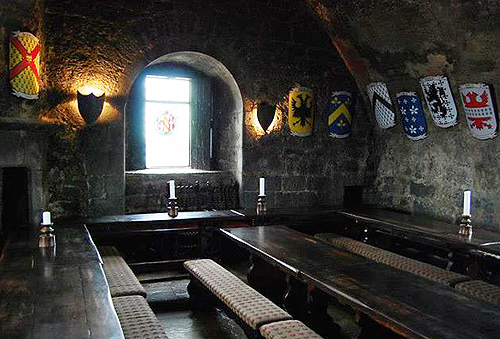 |
Dunguaire Castle, County Galway, Ireland
Dunguaire Castle is a 16th-century tower house on the southeastern shore of Galway Bay, near Kinvarra.
The name derives from the Dun of King Guaire, the legendary king of Connacht.
The castle's 75-foot tower and its defensive wall have been restored, and the grounds are open to tourists during the summer. |
||||||||
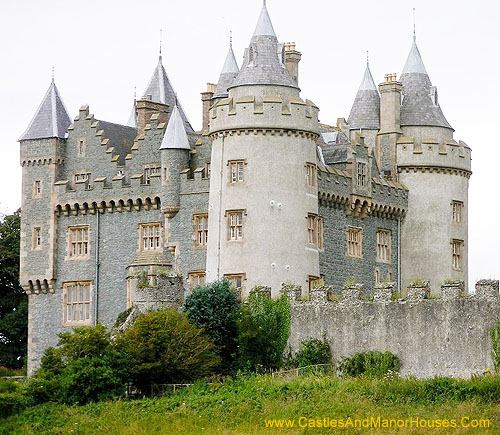 |
Killyleagh Castle Killyleagh, County Down, Northern Ireland.
Killyleagh Castle dominates the small village of Killyleagh
It is believed to be the oldest inhabited castle in the country, parts dating back to 1180.
Killyleagh Castle follows the architectural style of a Loire Valley château, having been redesigned by architect Sir Charles Lanyon in the mid-19th century.
It has been owned by the Hamilton family since the early 17th century. |
||||||||
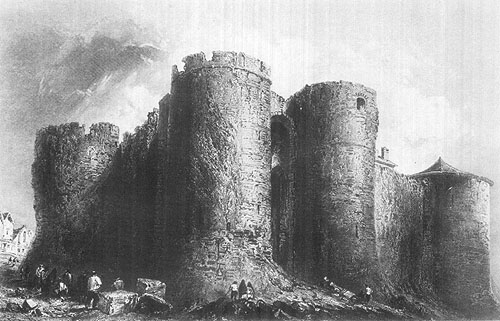 |
King John's Castle (Irish: Caisleán Luimnigh), King's Island, Limerick, Ireland.
King John's Castle is a 13th-century castle located next to the River Shannon. Although the site dates back to 922 when the Vikings lived on the Island, the castle itself was built on the orders of King John in 1200. One of the best preserved Norman castles in Europe, the walls, towers and fortifications remain today and are visitor attractions. |
||||||||
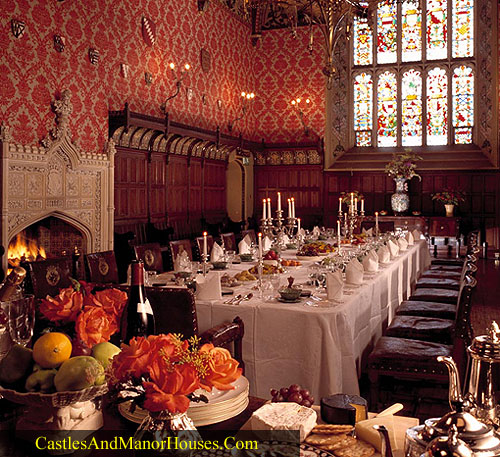 |
Lismore Castle Lismore, County Waterford, Ireland
Lismore Castle is a stately home belonging to the Dukes of Devonshire. It was largely re-built in the Gothic style during the mid-nineteenth century by William Cavendish, 6th Duke of Devonshire.
The castle site was originally occupied by Lismore Abbey, established in the early 7th century. Henry II, King of England stayed here in 1171. After 1185 his son King John built a 'castellum' here, which served as the residence of the local bishop. In 1589, Lismore was leased to and later acquired by Sir Walter Raleigh. Raleigh sold the property during his imprisonment for High Treason in 1602 to another colonial adventurer, Richard Boyle, later 1st Earl of Cork. After purchasing Lismore Boyle made it his principal seat. It was here in 1627 that Robert Boyle The Father of Modern Chemistry, the fourteenth of the Earl's fifteen children, was born.
Lismore featured in the Cromwellian wars when, in 1645, a force of Catholic confederacy commanded by Lord Castlehaven sacked the town and Castle. Some restoration was carried out by Richard Boyle, 2nd Earl of Cork (1612-1698) to make it habitable again but neither he nor his successors lived at Lismore. The castle (along with other Boyle properties was acquired by the Cavendish family in 1753.
Lismore Castle was used as Northanger Abbey in the 2007 ITV dramatisation of that name during its Jane Austen season. |
||||||||
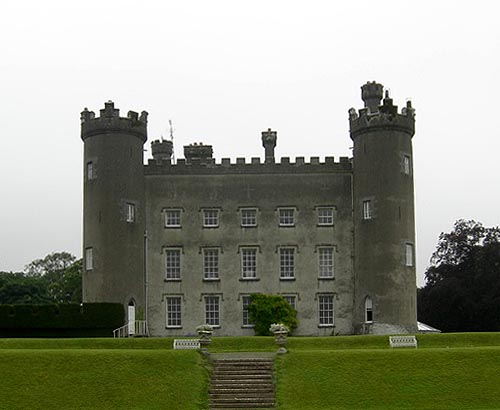 |
Tully-Nally Castle 2 km from Castlepollard, County Westmeath, Ireland.
Tullynally Castle is a country house (also known as Pakenham Hall Castle). The Gothic style building has over 120 rooms and has been home to the Pakenham family (Earls of Longford) for over 350 years.
The 2nd Earl remodelled the 17th-century house in the Gothic revival style in the early 1800s, adding towers and a moat. You can tell that it is not medieval because of the large, low, regular windows. The famous religious fruitcake, Lord Longford, was the 7th Earl. The grounds are open to the public. |
||||||||
|
|
|||||||||
|
|
|||||||||
|
|
|||||||||
|
|
|||||||||
|
|
|
|
|||||||
|
|
|||||||||
| :::: Link to us :::: Castle and Manor Houses Resources ::: © C&MH 2010-2014 ::: contact@castlesandmanorhouses.com ::: Advertising ::: |